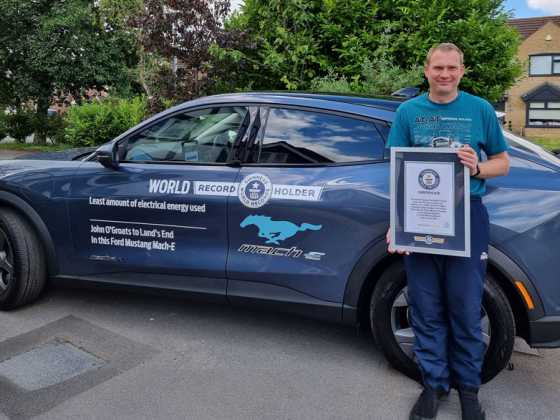Improving driver safety through education

For an organisation, there is a legal and moral duty to ensure that staff are fully trained for the tasks in hand. For driving, this clearly means some form of risk assessment and training, writes John Greenhough, RoSPA fleet safety consultant
Improving driver safety through education is a question of choice. Do the drivers need educating or is it the public they come into contact with that need the education?
Driver training is hard to quantify; would a driver be as likely or less likely to be involved in an incident (note not accident) as a result of receiving driver training. Accepting that the riskiest activity most workers face is driving for work and that 30 per cent of the road fatalities were involved with a driving for work activity, maybe the better question is “would those numbers be higher if no training took place?”
The National Driver Offenders Retraining Scheme (NDORS) offers educational training for drivers detected of a lesser driver offence in lieu of court proceedings, and evidence supports that following the training drivers are less likely to reoffend. If the information contained in this type of training were available to drivers before they are detected, wouldn’t that be better?
For the majority of drivers, the investment in this training is costly and time consuming and until they have a problem (i.e. are detected with a traffic violation), what is the need? But for an organisation there is a legal and moral duty to ensure their staff are fully trained for the tasks in hand.
What’s the risk?
For driving this clearly means some form of risk assessment and appropriate training. A Managing Occupational Road Risk review or audit is a good starting point for the organisation, acting as a “gap analysis” on the actions and defensibility of the business in the event things go wrong.
Do all drivers need to be trained? Not necessarily, but they all need to be risk assessed and those deemed medium to high risk given some form of intervention to support them. But why not offer classroom type training to all company drivers? It’s cost effective, shows due diligence, supports a culture of compliance and promotes road safety, not only to the work element but to the personal driving staff undertake.
RoSPA has long championed “ROADCRAFT – The Police Drivers Handbook” as a reference source of good driving. The principles form the basis of in-vehicle driver training offered by RoSPA, with many organisations opting for their drivers to undertake the RoSPA driving test in an attempt to obtain a Gold award, one of the highest civilian driving awards that can be obtained.
But what about educating other road users? Can an organisation have influence on how others drive? Schools are a great place to educate the young about the dangers on the road. You could approach a head teacher with an offer to sponsor some form of road safety training.
Women’s Institutes or U3A groups often look for guest speakers or an approach to a local supermarket to run a road safety event for the shoppers.
Technology
Telematics is becoming more and more common, even a simple in-cab camera is useful. While they can be used to defend the actions of the driver, they also highlight the actions of that driver in the moments before an incident. If they are driving well that will show too. The big problem with telematics is the use of the data that is provided. If the organisation isn’t reviewing it or at least carrying out some form of trend analysis with the data, it’s pointless.
There are many variants of systems in the market place and what works for one company may not be right for another, for that reason RoSPA cannot support one system over another. What is important is that when they are in situ, they are used and reviewed and that any training and development points are communicated across the business.
Drivers of large vehicles have come to rely on camera technology to help them when reversing or driving in congested situations. When they were first introduced there was resistance from many drivers about “big brother is watching”; nowadays the same resistance exists if someone were to try to remove the technology.
The negatives of technology
Technology, the saviour to all the road safety problems, or is it? It’s all very well having the technological advances towards road safety in place, so long as road users (not just drivers or those driving for work) don’t become overly reliant on them to the detriment of making their own decisions in the first instance and understand how the technology works in the second. For many older drivers, who learnt to drive in vehicles with a carburettor, now find themselves in a vehicle with an ECU and fuel injection systems – a very different piece of kit that no one has explained to them how it works.
Sat-Nav display screens are all making it easier to drive and taking away driving decisions, but at the same time taking attention from the road. Do organisations assume drivers understand all the technology and how it effects driving standards? Or do drivers need some readjustment to all the “new” stuff, even simple “toolbox” talks would help prevent drivers becoming overwhelmed.
Ultimately if vehicles and drivers aren’t on the road or sharing it when others are on it then collisions can’t happen. What steps can be taken? Can journeys be eliminated, shared, changed timings or use of remote conferencing.
It’s easy to get caught up in the day to day running of the business, not to intentionally ignore the road risk but leave it on the back burner until something happens, when it’s too late. RoSPA is well placed to review the MORR status of a business, undertake driver profiling, risk assessments and “grade” the driver and advise on appropriate interventions, carry out “train the trainer” courses, e-learning and workshop delivery to drivers, managers and directors.
Keep learning
It’s a truism that we “don’t know what we don’t know until we know it”, and education helps fill the void. It’s the “what” and “who” that needs education, then it’s just commitment.
At the beginning of the article the term “incident” was used in favour of “accident”. A definition of an accident (of which there are many) is an event that “cannot be planned, predicted or prevented”, all of which a driver can do with training and support.
Post collision investigation evidences that 93-95 per cent of incidents are due to human error that perhaps could be avoided. If we learn to drive, and usually need instruction to pass that test, why do we then stop? How many individuals take golf lessons, or music lessons or undertake professional development, but not for the one action that can kill or seriously maim others. But then aren’t we all good drivers, or is it the other guy?






